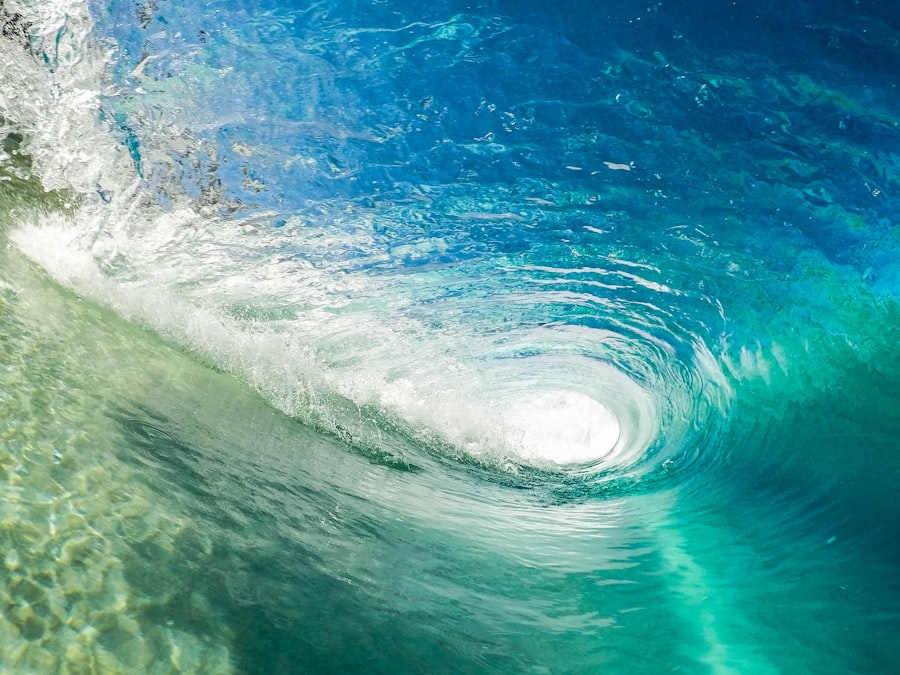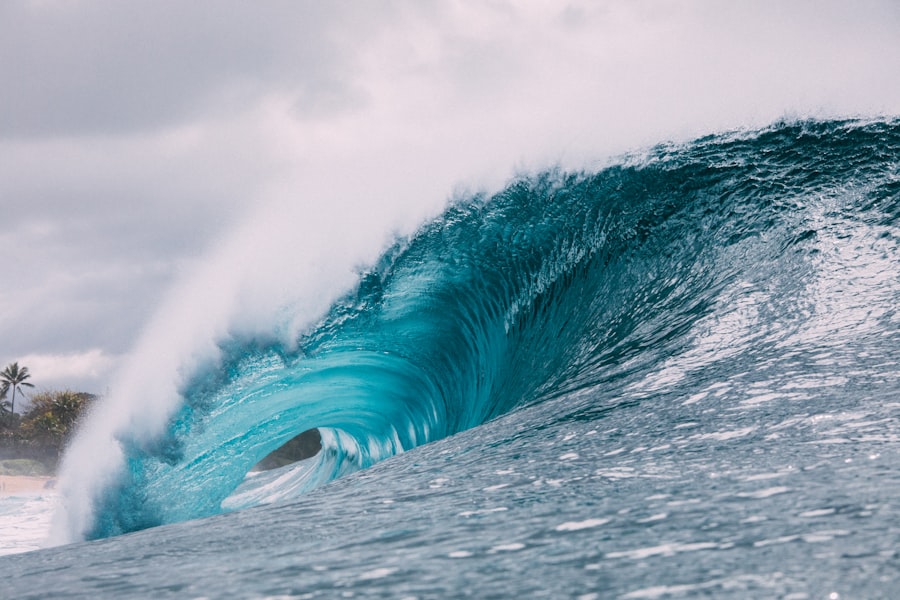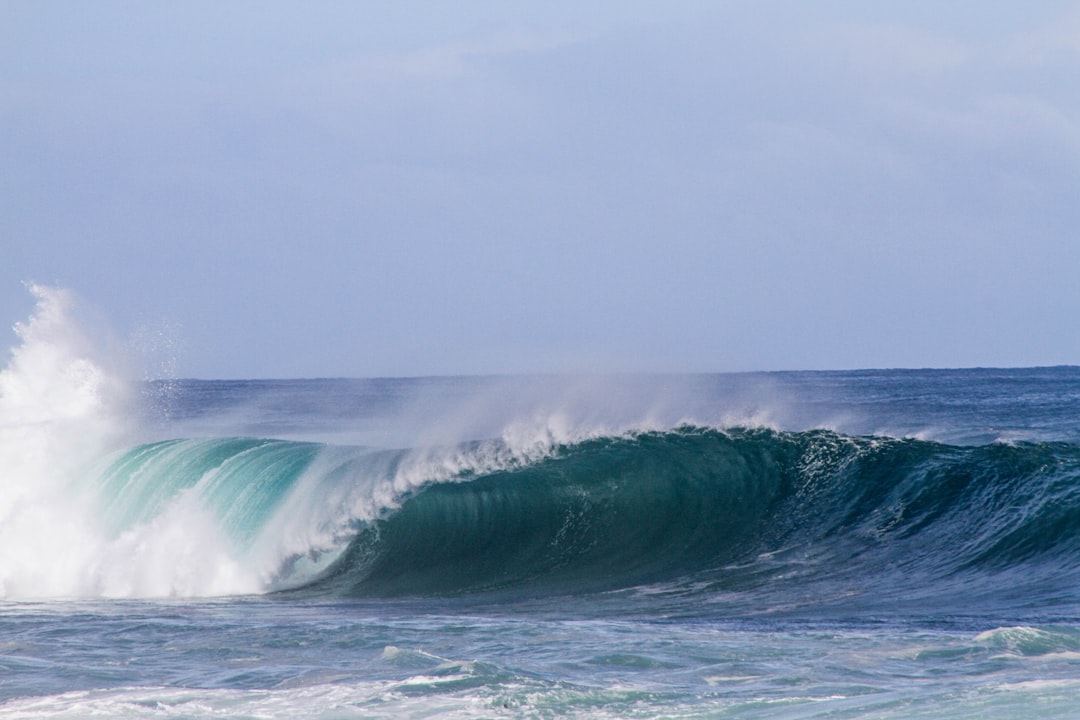The Drake Passage, a body of water situated between the southern tip of South America and Antarctica, is renowned for its tumultuous seas and unpredictable weather patterns. This narrow stretch of ocean, measuring approximately 600 kilometers (370 miles) wide, serves as a critical conduit for maritime traffic between the Atlantic and Pacific Oceans. Its geographical significance is underscored by the convergence of powerful ocean currents, including the Antarctic Circumpolar Current, which flows unimpeded around the continent of Antarctica.
This unique hydrological phenomenon contributes to the passage’s notorious reputation for rough seas and challenging navigation. The Drake Passage is not only a geographical marvel but also a vital ecological zone. It is home to a diverse array of marine life, including whales, seals, and various seabird species.
The nutrient-rich waters support a thriving ecosystem that attracts researchers and wildlife enthusiasts alike.
Understanding the dynamics of the Drake Passage is essential for anyone considering a journey through its waters, as it requires respect for both its natural wonders and its inherent dangers.
Key Takeaways
- The Drake Passage is a body of water between South America’s Cape Horn and the South Shetland Islands of Antarctica, known for its challenging weather and rough seas.
- The waves in the Drake Passage can reach heights of 30 feet or more, making it one of the roughest stretches of water in the world.
- Navigating the Drake Passage presents challenges such as strong winds, icebergs, and unpredictable weather conditions.
- Safety precautions for crossing the Drake Passage include securing all loose items, wearing appropriate gear, and staying informed about weather conditions.
- Tips for surviving Drake Passage waves include staying hydrated, getting plenty of rest, and preparing mentally for the journey.
The Power of Drake Passage Waves
The waves of the Drake Passage are legendary among sailors and adventurers, often described as some of the most formidable on the planet. These waves can reach heights of over 30 feet, driven by relentless winds that sweep across the open ocean without any landmass to impede their force. The combination of strong currents and high winds creates a chaotic sea state that can change rapidly, catching even experienced mariners off guard.
The sheer power of these waves is a testament to nature’s might, and they serve as both a challenge and a thrill for those brave enough to navigate them. The waves in the Drake Passage are not merely a physical obstacle; they also embody the unpredictable nature of oceanic conditions. Sailors must remain vigilant and adaptable, as the weather can shift dramatically within hours.
The passage’s reputation for rough seas has led to countless tales of adventure and survival, with many recounting their experiences battling towering waves and fierce storms. For those who successfully navigate these waters, the sense of accomplishment is profound, as they have faced one of nature’s most formidable challenges head-on.
Navigating the Challenges of the Drake Passage

Navigating the Drake Passage requires a combination of skill, experience, and an understanding of the unique challenges posed by this body of water. The passage is notorious for its rapidly changing weather conditions, which can transform from calm to chaotic in a matter of moments. Sailors must be prepared for everything from dense fog to sudden storms, making careful planning and real-time decision-making crucial components of any journey through these waters.
The ability to read weather patterns and ocean currents can mean the difference between a safe passage and a perilous situation. In addition to weather challenges, the Drake Passage presents navigational difficulties due to its complex geography. The presence of underwater ridges and shifting currents can create hazardous conditions for vessels of all sizes.
Mariners must be adept at using navigational tools and techniques to chart their course effectively while remaining aware of their surroundings. This level of vigilance is essential not only for ensuring safe passage but also for maximizing the experience of traversing one of the world’s most awe-inspiring maritime routes.
Safety Precautions for Crossing the Drake Passage
| Safety Precautions | Description |
|---|---|
| Life Jackets | All passengers are required to wear life jackets during the crossing. |
| Emergency Drills | Crew members conduct regular emergency drills to ensure preparedness. |
| Weather Monitoring | Continuous monitoring of weather conditions to ensure safe passage. |
| Experienced Crew | Highly trained crew members with experience in navigating the Drake Passage. |
| Medical Facilities | Onboard medical facilities and staff available for any emergencies. |
Safety should always be a top priority when crossing the Drake Passage. Mariners are advised to conduct thorough pre-voyage preparations, which include checking weather forecasts, ensuring that all safety equipment is in good working order, and familiarizing themselves with emergency procedures. Life jackets, flares, and first aid kits are essential items that should be readily accessible on board.
Additionally, having a reliable communication system in place can be crucial for maintaining contact with other vessels or emergency services if needed. Another important safety measure involves choosing the right vessel for the journey. Ships designed specifically for navigating rough seas are equipped with stabilizers and reinforced hulls that can withstand the forces encountered in the Drake Passage.
Mariners should also consider traveling with experienced crew members who are familiar with the passage’s challenges. Their expertise can provide invaluable guidance during difficult conditions, ensuring that all onboard remain safe while navigating this formidable stretch of ocean.
Tips for Surviving Drake Passage Waves
Surviving the waves of the Drake Passage requires more than just physical preparation; it also demands mental fortitude and strategic thinking. One effective tip for managing rough seas is to maintain a steady course while avoiding sudden maneuvers that could destabilize the vessel. Sailors should also be mindful of their speed; traveling too fast can exacerbate the impact of waves, while moving too slowly may leave them vulnerable to being overtaken by larger swells.
Another crucial aspect of surviving Drake Passage waves is understanding one’s own limits and those of the vessel. Sailors should be aware of their comfort levels with rough seas and be prepared to adjust their plans accordingly. This might mean waiting for a more favorable weather window or altering their route to avoid particularly treacherous areas.
By remaining flexible and responsive to changing conditions, mariners can enhance their chances of successfully navigating the passage while minimizing discomfort and risk.
Equipment and Gear for Crossing the Drake Passage

The right equipment and gear are essential for anyone planning to cross the Drake Passage.
Layering is key; thermal base layers combined with waterproof outer shells can help maintain body heat while keeping moisture at bay.
Additionally, sturdy footwear with good grip is vital for maintaining stability on deck during turbulent conditions. Beyond clothing, specialized gear such as harnesses and safety lines can provide an extra layer of security when moving about the vessel in rough seas. Life rafts equipped with emergency supplies are also crucial in case of an emergency evacuation.
Furthermore, having navigational tools such as GPS devices, compasses, and charts readily available ensures that sailors can effectively chart their course even in challenging conditions. Investing in quality equipment not only enhances safety but also contributes to a more enjoyable experience while crossing this iconic maritime route.
The Role of Weather in Drake Passage Wave Navigation
Weather plays a pivotal role in navigating the waves of the Drake Passage. The region is characterized by its volatile climate, where storms can develop rapidly due to shifting atmospheric conditions. Mariners must stay informed about weather forecasts and be prepared to adapt their plans based on real-time updates.
Understanding how different weather patterns affect wave height and frequency is essential for making informed decisions about when to set sail or seek shelter. In addition to monitoring forecasts, sailors should also develop an awareness of local weather phenomena that may not be captured in broader reports. For instance, microclimates can exist within the passage due to its unique geography, leading to localized weather events that may surprise even seasoned navigators.
By cultivating a keen sense of observation and remaining attuned to changes in wind direction or cloud formations, sailors can enhance their ability to anticipate shifts in weather conditions and respond accordingly.
Strategies for Minimizing the Impact of Drake Passage Waves
Minimizing the impact of waves in the Drake Passage involves employing various strategies that enhance both safety and comfort during transit. One effective approach is to adjust the vessel’s heading relative to incoming waves; by positioning the bow at an angle rather than facing them head-on, sailors can reduce the force exerted on the ship and create a smoother ride. This technique requires skillful maneuvering but can significantly lessen discomfort during turbulent passages.
Another strategy involves utilizing onboard systems designed to stabilize vessels in rough seas. Many modern ships are equipped with stabilizers that counteract rolling motions caused by waves, providing a more stable platform for passengers and crew alike. Additionally, mariners should ensure that all cargo is securely stowed to prevent shifting during transit, which can exacerbate instability and increase risk during rough conditions.
The Importance of Experience in Crossing the Drake Passage
Experience plays an invaluable role in successfully crossing the Drake Passage. Seasoned mariners possess a wealth of knowledge gained from previous voyages through these challenging waters, allowing them to make informed decisions based on firsthand encounters with varying conditions. Their familiarity with navigation techniques, weather patterns, and vessel handling equips them with skills that are essential for managing unexpected challenges.
Moreover, experienced sailors often develop an intuitive understanding of their vessel’s capabilities and limitations in rough seas. This insight enables them to respond effectively to changing conditions while maintaining safety onboard. For those new to crossing the Drake Passage, seeking mentorship from seasoned navigators can provide critical guidance and enhance overall preparedness for this formidable journey.
The Psychological Impact of Drake Passage Waves
The psychological impact of navigating the waves in the Drake Passage cannot be underestimated. For many sailors, facing towering swells and fierce winds can evoke feelings ranging from exhilaration to anxiety. The uncertainty inherent in such conditions may lead to heightened stress levels as individuals grapple with their fears while striving to maintain composure amidst chaos.
However, overcoming these psychological challenges can also foster resilience and personal growth. Successfully navigating rough waters often instills a sense of accomplishment that transcends mere physical achievement; it becomes a testament to one’s ability to confront adversity head-on. Many sailors emerge from their experiences in the Drake Passage with newfound confidence and a deeper appreciation for both nature’s beauty and its unpredictability.
Celebrating Success: Navigating the Drake Passage
Successfully navigating the Drake Passage is an achievement worthy of celebration. For those who have braved its waves and emerged unscathed, there exists a profound sense of camaraderie among fellow sailors who share similar experiences. The journey through this iconic maritime route often becomes a defining moment in one’s sailing career—a testament to skill, perseverance, and respect for nature’s power.
Upon completing their passage, many sailors take time to reflect on their journey while sharing stories with others who have faced similar challenges. Whether through informal gatherings or organized events celebrating maritime achievements, these moments serve as reminders of both individual triumphs and collective resilience in overcoming one of nature’s most formidable obstacles. As they recount tales of adventure amidst towering waves, sailors forge lasting connections that transcend borders—united by their shared experiences navigating one of the world’s most awe-inspiring yet treacherous bodies of water.
The Drake Passage is renowned for its tumultuous waters and towering waves, making it a formidable route for sailors and researchers alike. An article that delves into the geographical significance and challenges of navigating this treacherous stretch of ocean can be found on MyGeoQuest. This piece provides insights into the unique oceanographic conditions that contribute to the Drake Passage’s notorious reputation. For more detailed information, you can read the related article on the MyGeoQuest website by following this link.
WATCH HERE: Drake Passage: Earth’s Deadliest Waters Revealed
FAQs
What is the Drake Passage?
The Drake Passage is the body of water between the southern tip of South America and the northern tip of the Antarctic Peninsula. It is known for its rough seas and challenging sailing conditions.
What are Drake Passage waves?
Drake Passage waves are large and powerful waves that are characteristic of the area. They are often caused by strong winds and the convergence of different ocean currents.
How big can Drake Passage waves get?
Drake Passage waves can reach heights of up to 30 meters (98 feet) during extreme weather conditions. These waves are some of the largest and most powerful in the world.
Why are Drake Passage waves so dangerous?
Drake Passage waves are dangerous due to their size, power, and the unpredictable nature of the weather in the area. They pose a significant risk to ships and can make sailing through the passage extremely challenging.
Are there any safety measures for navigating Drake Passage waves?
Ships that navigate the Drake Passage often take precautions such as securing all loose items, reinforcing the ship’s structure, and having experienced crew members on board. Some ships may also choose to wait for calmer weather conditions before attempting to cross the passage.
